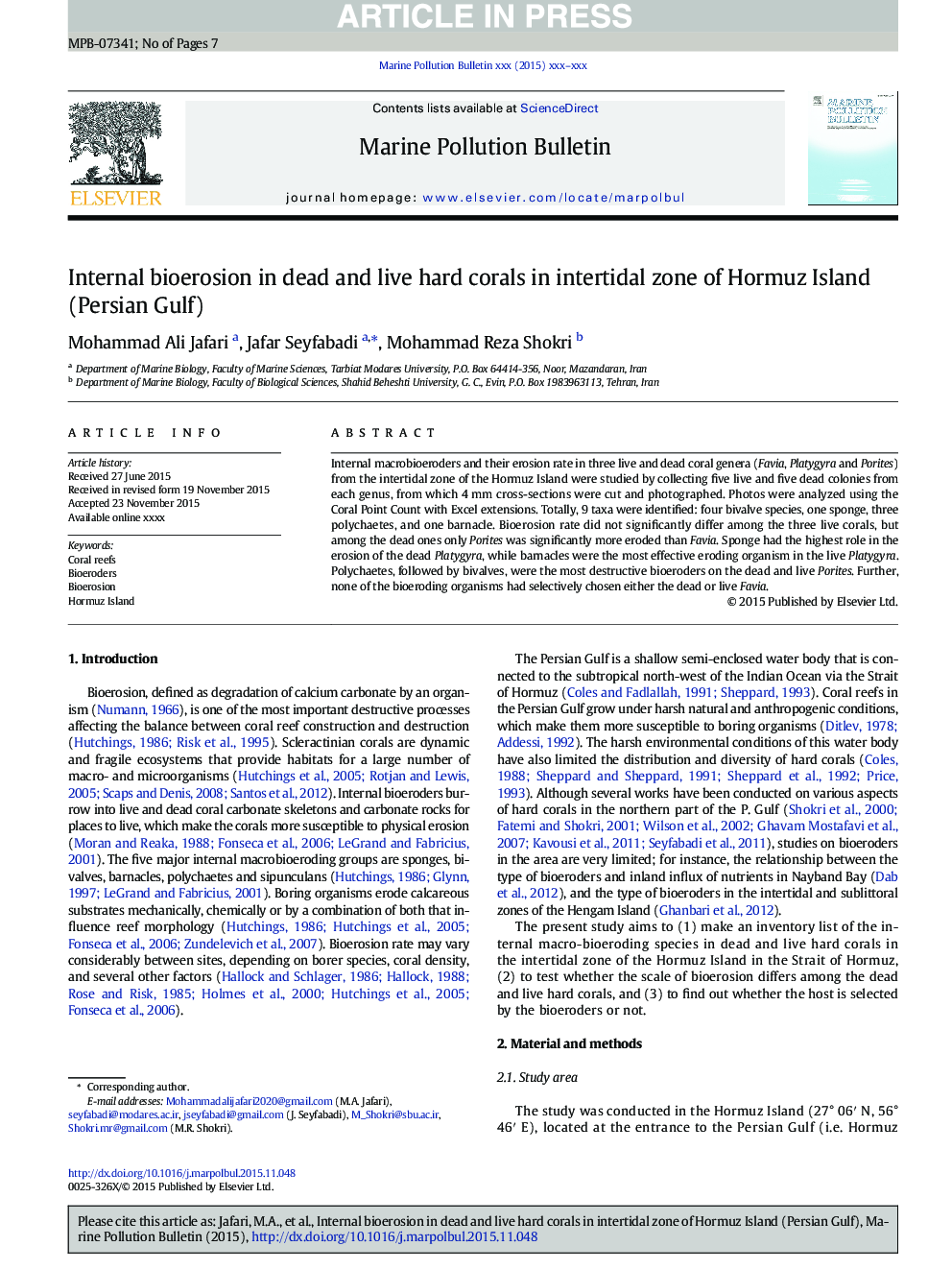| Article ID | Journal | Published Year | Pages | File Type |
|---|---|---|---|---|
| 6356037 | Marine Pollution Bulletin | 2016 | 7 Pages |
Abstract
Internal macrobioeroders and their erosion rate in three live and dead coral genera (Favia, Platygyra and Porites) from the intertidal zone of the Hormuz Island were studied by collecting five live and five dead colonies from each genus, from which 4Â mm cross-sections were cut and photographed. Photos were analyzed using the Coral Point Count with Excel extensions. Totally, 9 taxa were identified: four bivalve species, one sponge, three polychaetes, and one barnacle. Bioerosion rate did not significantly differ among the three live corals, but among the dead ones only Porites was significantly more eroded than Favia. Sponge had the highest role in the erosion of the dead Platygyra, while barnacles were the most effective eroding organism in the live Platygyra. Polychaetes, followed by bivalves, were the most destructive bioeroders on the dead and live Porites. Further, none of the bioeroding organisms had selectively chosen either the dead or live Favia.
Keywords
Related Topics
Physical Sciences and Engineering
Earth and Planetary Sciences
Oceanography
Authors
Mohammad Ali Jafari, Jafar Seyfabadi, Mohammad Reza Shokri,
